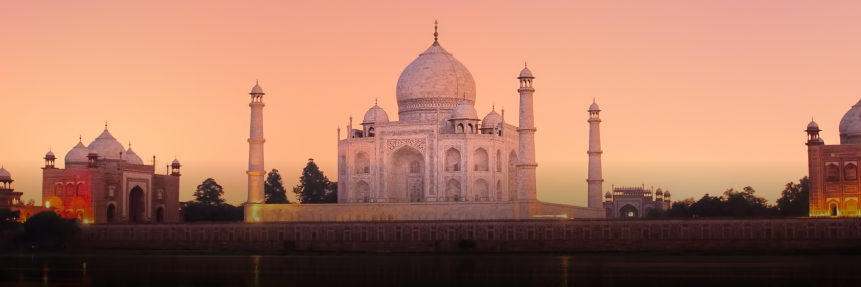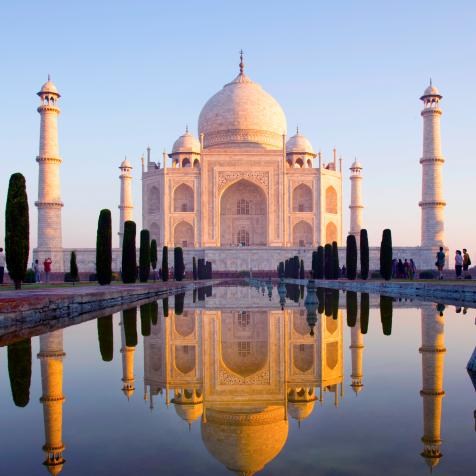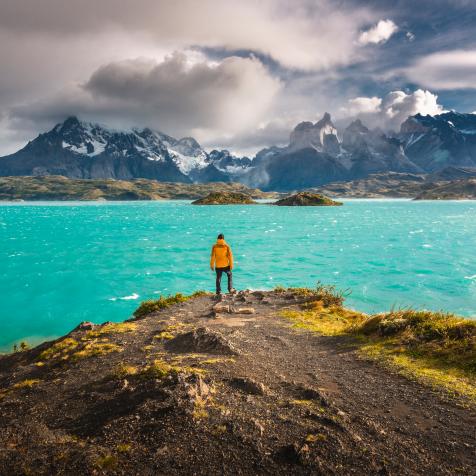
Getty
Getty
Nobody Knows Who Designed the Taj Mahal
Commissioned in 1632, The Taj Mahal is one of the newest Seven Wonders of the World, and surprisingly no one knows who actually designed it.
The Taj Mahal is one of the world's most recognizable structures. The UNESCO heritage site is considered one of the New Seven Wonders of the World — alongside the Great Wall of China and Petra in Jordan. But the Taj Mahal is one of the newer World Wonders on the list, having been commissioned in 1632. For this reason, its admirers are often surprised to find out that nobody actually knows who designed it.
A Design of Its Time
The Taj Mahal's combination of Indian, Persian, and Islamic influences makes it the most distinctive and outstanding example of Mughal architecture in existence today. The Mughals claimed descendence from Genghis Khan and Tamerlane and established an extremely diverse, religiously tolerant society largely considered to be India's last Golden Age. The Taj Mahal represents a key turning point in the identity of the empire itself. Although the Mughals were proud of their Persian and Timurid roots, the design of the Taj Mahal shows that they now saw themselves as being Indian first, while respecting their Muslim heritage. One of the building's most dominant themes is hierarchy, which played a critical role in Mughal religion and philosophy during the 17th century.
The Story of the Taj Mahal
Shah Jahan ruled at the peak of Mughal power and commissioned the Taj Mahal to be built as a mausoleum for his favorite wife, Mumtaz Mahal, who died tragically after the birth of their 14th child. Shah Jahan oversaw the design and construction of the palace personally, taking great care to participate in nearly every aspect of the building's construction.
While historians know that Shah Jahan was very interested in architecture, he could not have designed the building himself — it was almost certainly designed by a team of world-class professionals, and that could be one of the reasons why their names are lost to history while Shah Jahan's remains most closely tied to the mausoleum. Shah Jahan may have been interested in promoting the building as part of his imperial legacy and a testament to the loss of his beloved rather than a work of art to be appreciated independent of those factors.

Getty
So Who Designed It?
The official Mughal histories account for 37 designers and architects who would have been able to contribute to the Taj Mahal commission for Shah Jahan. The person who most likely played the role of the chief architect was Ustad Ahmad from Lahore, an Indian of Persian descent who was credited with designing the Red Fort at Delhi. Modern historians tend to agree that the Taj Mahal was a collaborative effort; for example, the famous Turkish dome-builder Ismaili Afandi probably played a role, along with Amanat Khan from Shiraz, the master calligrapher whose signature graces the Taj Mahal's gateway.
With a team like this, it's likely that Shah Jahan acted in the capacity of something like an artistic director, gathering various world-renowned experts and giving them specific tasks to perform according to his own project schedule. More than 20,000 workers from throughout India, Europe, Persia, and the Ottoman Empire contributed to the construction of the Taj Mahal, alongside 1,000 elephants performing heavy lifting duties. Whether or not one person designed it, the final product was certainly a group effort.


















